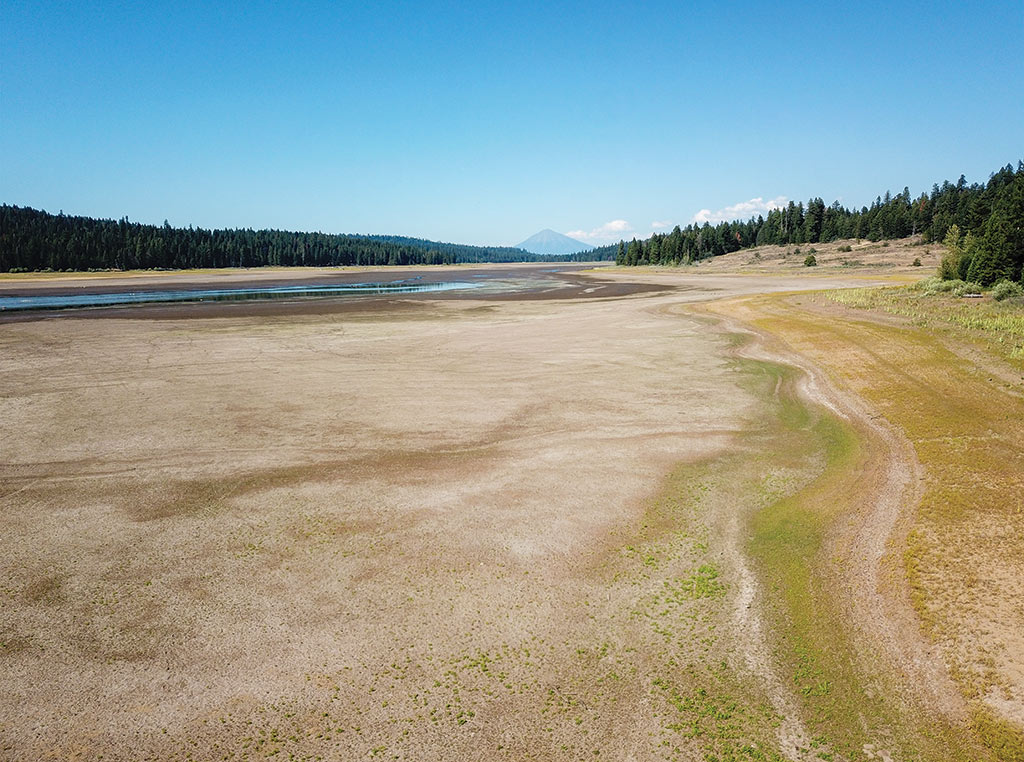Agriculture/Education January 01, 2022
Dealing with Drought
Combining tech and creativity to farm when water is short.
Drought is likely to be a growing force in North American ag.
Every year for the past two decades, at least part of the West has been in drought. Meanwhile, notes agricultural climatologist Jerry Hatfield, retired director of the USDA’s National Laboratory for Agriculture and the Environment in Ames, Iowa, “the ratio of spring to summer precipitation across the Midwest is actually changing, so we’re getting more in the spring, less in the summer.
“What we’re seeing is summer is becoming more variable, with decreasing amounts,” he adds. “The other thing that’s changing in our whole precipitation regime is the amount of intense storms. A lot of our storms are becoming high-volume, intense events.”
Rain and snowfall trends over the past few decades challenge farmers with three of the key definitions of the term “drought”—meteorological, hydrological, and agricultural.
Three definitions. What the West is experiencing is meteorological drought, with shortages of precipitation. Over time, that turns into hydrological drought as streams, reservoirs, and aquifers fail to recharge due to water shortfalls.
In the Midwest, climatologists expect more seasons like 2021—spring storms delay planting and concentrate roots near the soil surface, followed by agricultural drought, a lack of water when crops need it.
Some water watchers also refer to regulatory drought, the impact of lawsuits and irrigation allocations on farmers’ access to water. Driven by increased emphasis on environmental needs for water—for instance, maintaining target river levels to protect fish habitat—treaty obligations, and the needs of a growing population, regulatory drought is probably more certain than climatic drought.
Dan Keppen of the Family Farm Alliance points out that when the Central Valley Project’s last major water storage dam was completed in 1978, California’s population was 24.2 million. Today, it’s 39.5 million. Meanwhile, millions of acre-feet of water formerly allocated to farmers has been re-allocated to environmental needs.
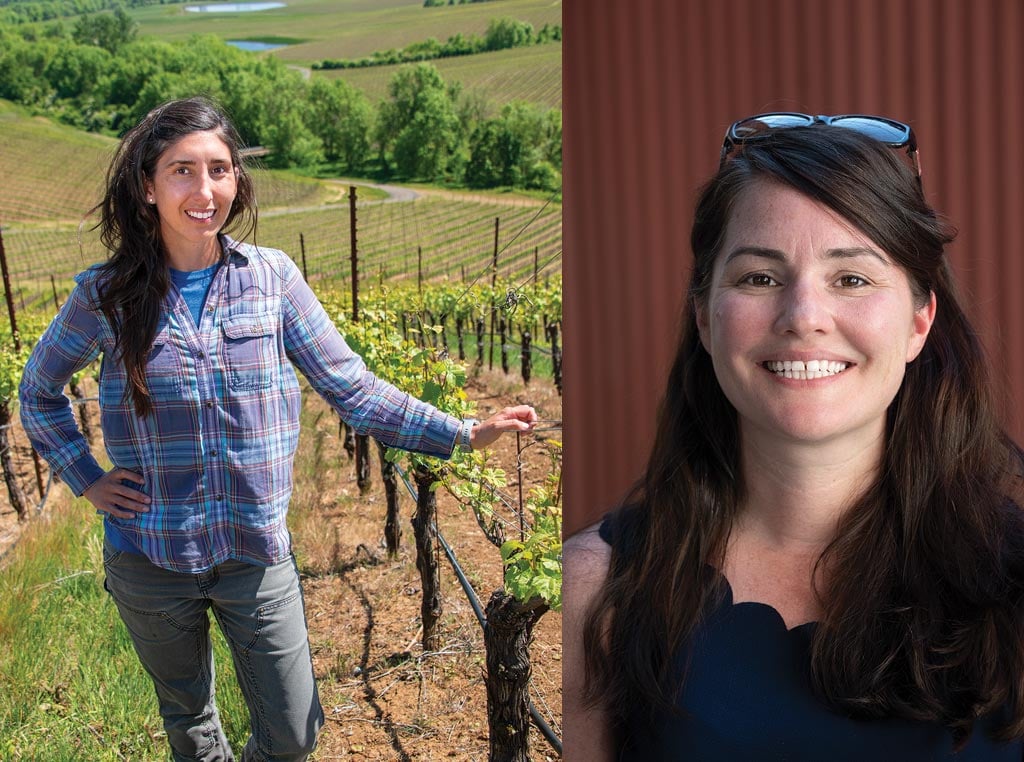
Above, left. Vineyard manager Leti Catoira taps a global network within Jackson Family Wines as she plans for future decades. Above, right. Leslie Roche of University of California, Davis, says drought plans help ranchers manage stocking rates, culls, and sales. The key, she says: set trigger dates and write down what you’ll need to do if those triggers are tripped.
Keppen’s group has joined forces with a wide range of farm and conservation groups to push for infrastructure maintenance, new storage, and incentives for conservation and other mechanisms that allow users to grapple with drought.
Genetics. Even when water is available, temperature trends, including warmer nights, present a threat. In Iowa, Hatfield compared corn grown in a chamber that matched outside temperatures with the same three hybrids grown at temperatures 7.2 degrees F higher.
The plants developed similarly, but yields fell by as much as 85% in the hot chamber. Hatfield explains that heat disrupted pollination and warm nights forced plants to metabolize much of the carbohydrate they produced during the day.
Seed companies are hard at work to help address hazards like those. Geoff Graham, Corteva Agriscience vice president and global plant breeding leader, says breeders are tackling abiotic stress—inanimate challenges like drought or heat—as well as biotic stress like changes in pathogen pressure.
Graham says his team operates test plots with precise controls on water inputs to better understand not only how much water particular crosses need, but exactly when the plants most need it. Portable wind tunnels can then simulate 60-to-80-mph windstorms to test for green snap and lodging.
When desired traits are spotted, scientists identify genetic markers that they can track through the breeding process.
Graham says growers may actually choose shorter maturity hybrids to squeeze a double crop into lengthening seasons or align their crops with weather patterns, taking advantage of wetter springs and filling grain before summers get too dry.
In McMinnville, Oregon, vineyard manager Leti Catoira of Jackson Family Wines says she and her colleagues make variety and clonal choices carefully, with a close eye on changes in season length, heat units, rainfall patterns, disease pressure—and consumer acceptance.
“We could grow a wonderful grape that is more resilient, more efficient in its water requirements, and we don’t need to spray as often, but we don’t know if the consumer’s going to like it and drink it,” she points out. “So it all starts with educating the consumer.”
Graham says seed breeders rely on consumer opinion, too, for continued permission to use vital breeding technologies.
“We have the science and the technology, the capabilities and the knowledge,” he says. “I’m not sure that we’ll be allowed to use all of those to solve the problems as we go forward. That’s my scary part.”
Above. California’s Shasta Lake dropped to 25% of capacity in 2021. When Shasta Dam was completed in 1945, California’s population was 9.3 million; today it’s 39.5. Shifts in rain and snow patterns, along with warmer air that speeds evaporation, raise expectations of more drought. High soil organic matter levels, good soil structure, and crop residue that keeps the top inch of soil cool help make the most of every drop of water, says retired USDA-ARS researcher Jerry Hatfield.
Planning. Thinking ahead is vital, says Leslie Roche at the University of California, Davis, who studied how ranchers dealt with her state’s 2016 drought. “One of the big things is having a written drought plan in place,” she says. “What resources do I have available, what’s my capacity, how many animals do I need to sustain my operation?
“Thinking about that before you’re in the triage period, having a plan in place, helps alleviate some of the mental anguish,” she adds. “Setting dates—‘if by this date it doesn’t rain, what are you going to do?’—seems to be critical for folks so they don’t keep postponing.”
A key tool: the National Drought Mitigation Center in Lincoln, Nebraska, posts weekly drought maps, interactive tools, and long-range forecasts at droughtmonitor.unl.edu. (For similar tools in Canada, search “Canadian drought monitor.”)
“You don’t want to be making big decisions on emotion,” agrees climatologist Brian Fuchs at the Center. “You want to have the facts and data backing you up. Then you don’t sit and worry ‘what am I going to do?’ because you’ve already got that plan.” ‡
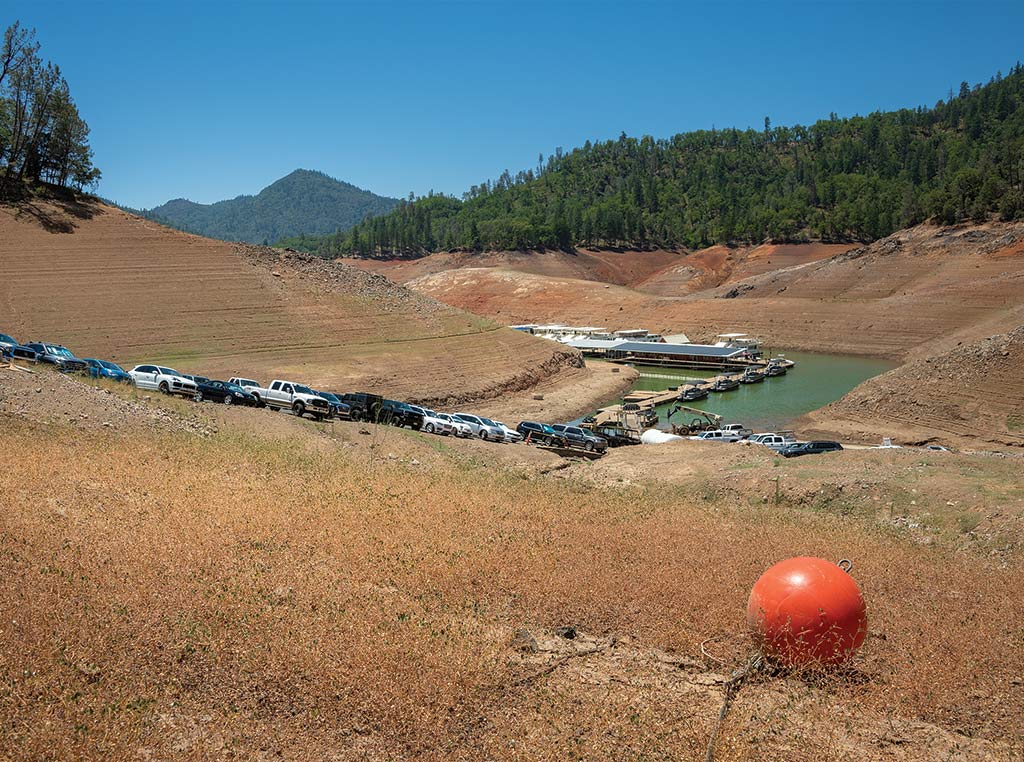
Above. A mooring buoy at a Shasta Lake marina sits high and dry.
Read More
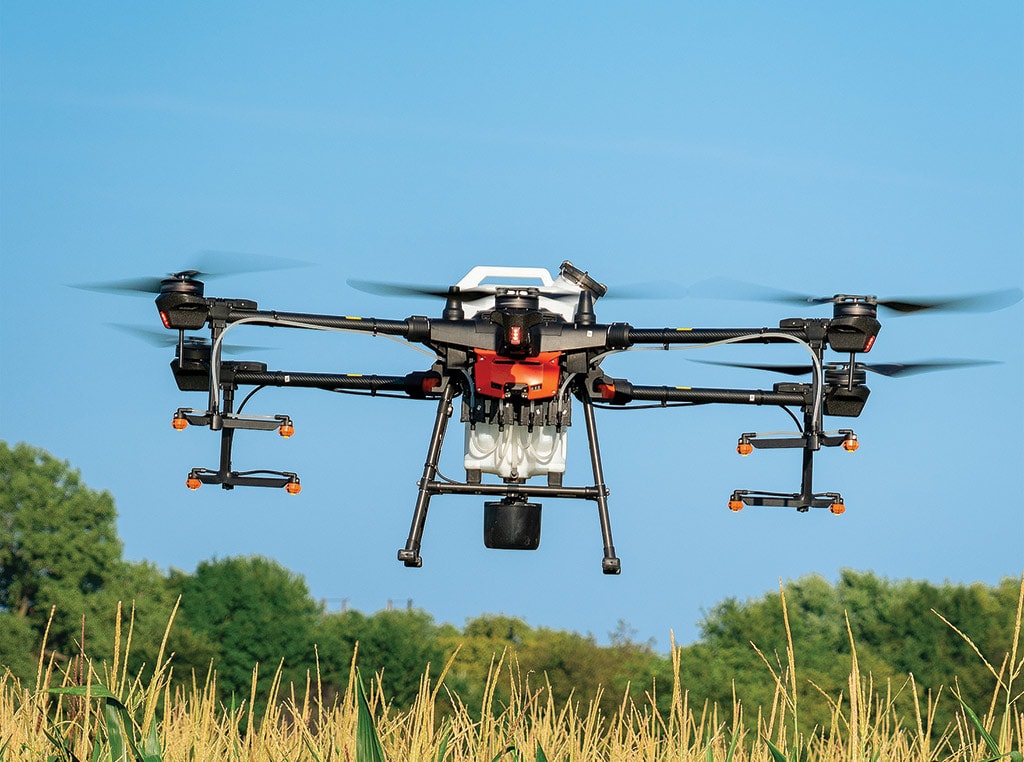
AG TECH, EDUCATION
Counting Corn
Drones in agriculture are getting smarter and becoming more practical on the farm.
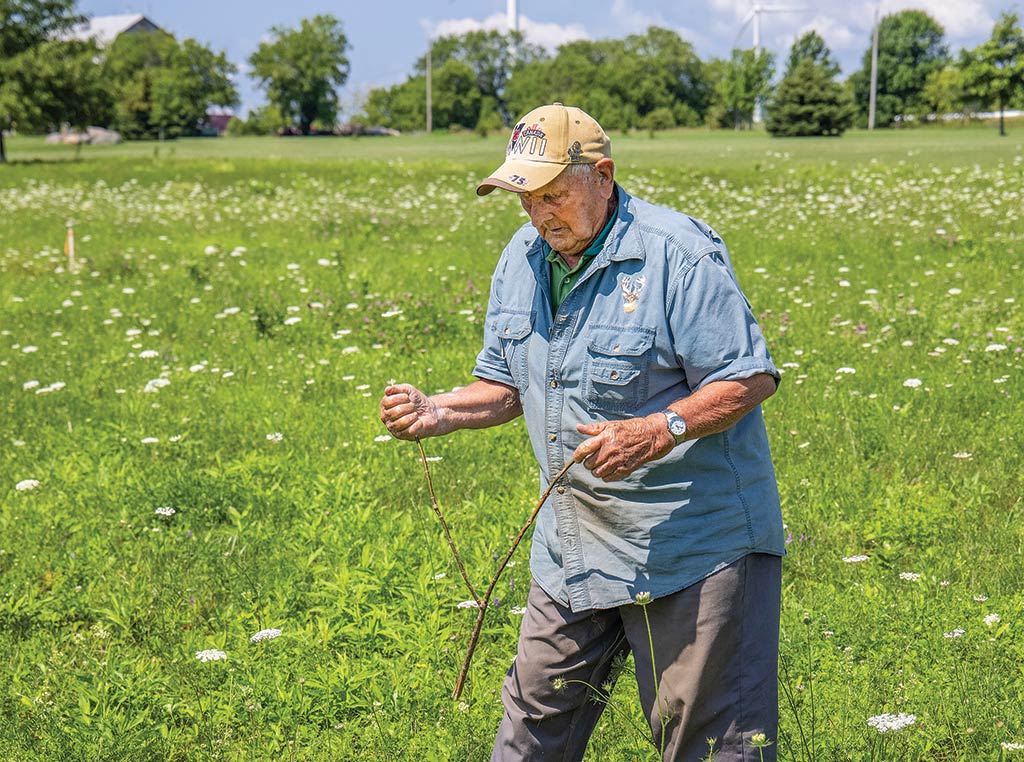
AGRICULTURE
The Water Witch
John Posthumus has been dowsing water wells for over 60 years.

